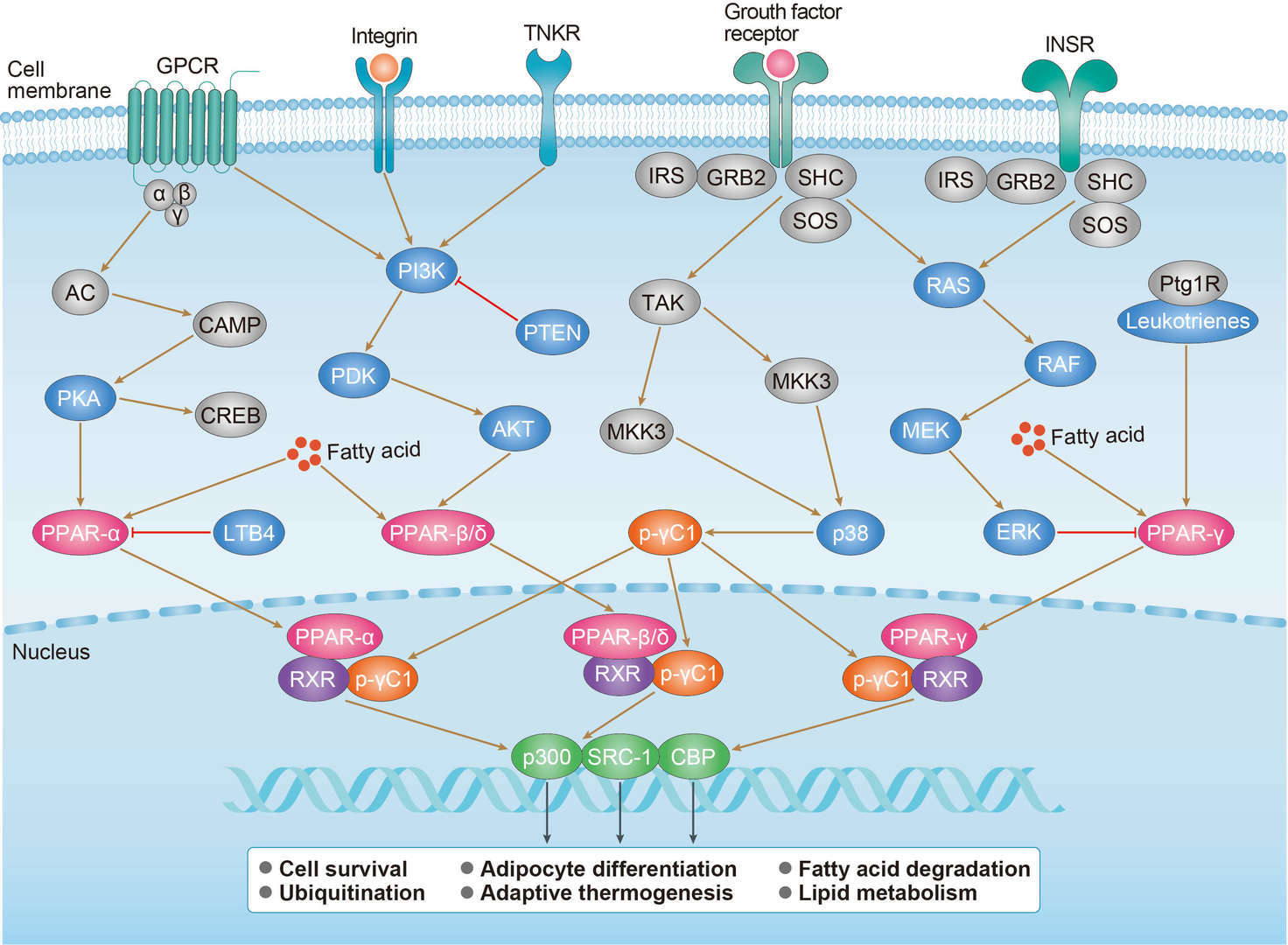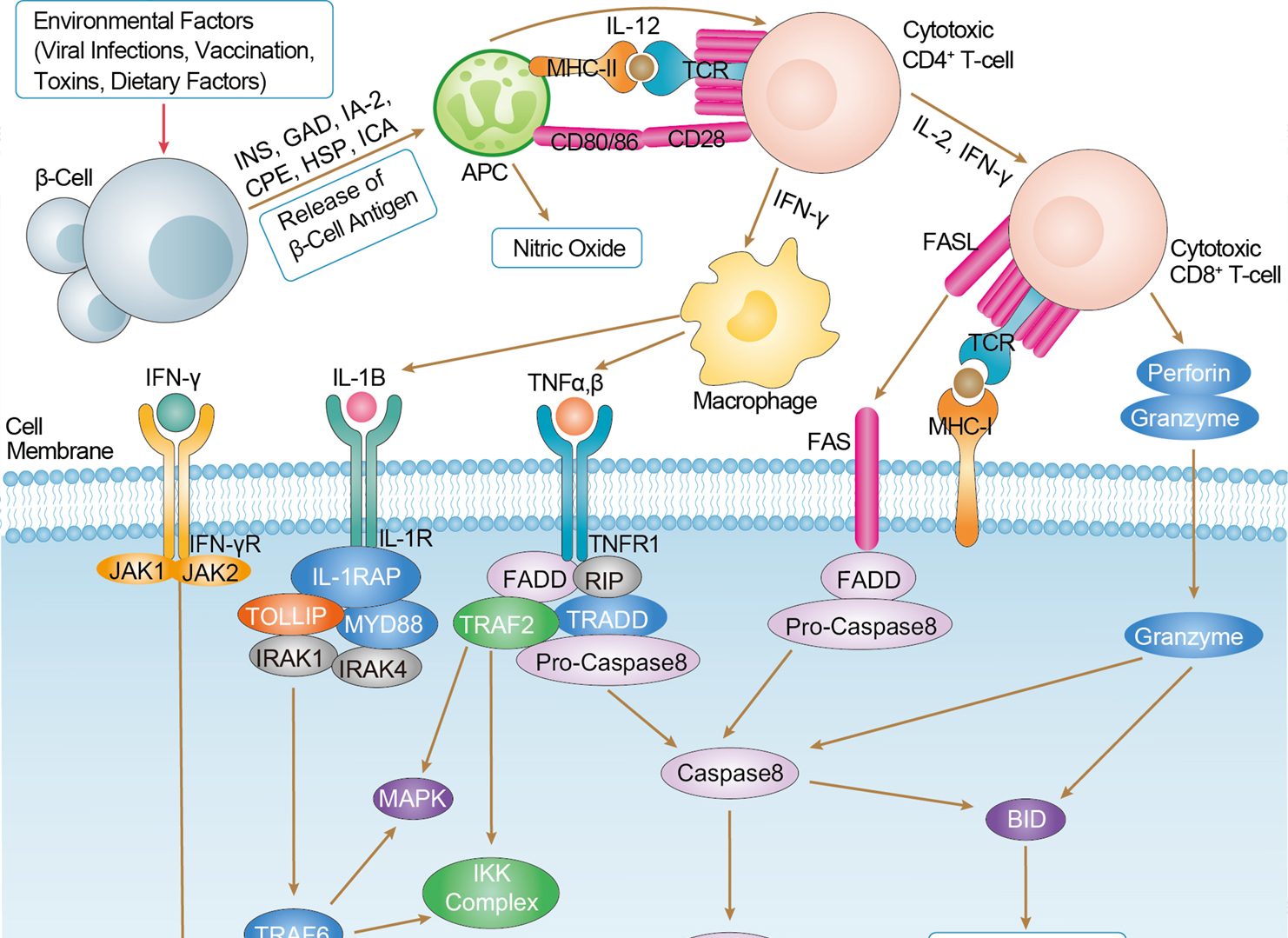Mouse Anti-INSR Recombinant Antibody (clone 83-7) (CAT#: PABL-246)
Recombinant Mouse Antibody (83-7) is capable of binding to Insulin receptor, expressed in Chinese Hamster Ovary cells (CHO).

Figure 1 Immunohistochemistry (1µg/ml) staining insulin receptor alpha in human pancreas using an automated system (DAKO Autostainer Plus).

Figure 2 Overlay histogram showing Jurkat cells stained with 83-7 (red line).
The cells were fixed with 4% paraformaldehyde (10 min) and incubated in 1x PBS / 10% normal goat serum / 0.3M glycine to block non-specific protein-protein interactions. The cells were then incubated with the antibody for 30 min at 22°C. The secondary antibody used was DyLight® 488 goat anti-mouse IgG (H+L) at 1/500 dilution for 30 min at 22°C. Isotype control antibody (black line) was mouse IgG1 used under the same conditions. Acquisition of>5,000 events was performed. This antibody gave a positive signal in Jurkat cells fixed with methanol (5 min) used under the same conditions.

Figure 3 (D-G) Cell surface expression of INSR mutants as determined by flow cytometry.
Stacked overlay single parameter histograms displaying intensity of INSR-FITC fluorescence on the X-axis and number of events on the Y-axis. Isotype control IgG (light grey) was used as a negative control to generate a negative gate to determine the percentage of the population positive for anti-INSR antibody binding (numbers). Rightward shift of the peak (blue 83-7, dark cyan 83-14, orange 18-44, purple 18-146) from the IgG control is a function of both mutant INSR expression and antibody affinity.
Brierley, G., Siddle, K., & Semple, R. K. (2017). Evaluation of anti insulin receptor antibodies as potential novel therapies for human insulin receptoropathy. BioRxiv, 223883.

Figure 4 Insulin- and antibody-stimulated autophosphorylation of WT and mutant INSR.
CHO FlpIn cells stably expressing either human WT or mutant INSR (as indicated) were serum starved prior to 10 minute stimulation with increasing concentrations of either insulin, antibody (83- 7, 83-14, 18-44, 18-146 or control IgG, solid lines) or increasing concentrations of insulin in the presence of 10nM antibody (broken lines). Cells were lysed and myc-tagged receptors were immunocaptured on 96-well plates and then incubated with biotin-conjugated 4G10 platinum antibody to detect phosphorylated tyrosine residues. Europium-labelled strepavidin was used to detect bound anti-phosphotyrosine antibody 4G10 by time-resolved fluorescence.
Brierley, G., Siddle, K., & Semple, R. K. (2017). Evaluation of anti insulin receptor antibodies as potential novel therapies for human insulin receptoropathy. BioRxiv, 223883.

Figure 5 Insulin and antibody stimulated glucose uptake via WT and mutant INSR.
3T3-L1 MmINSRKD hINSR (mutant as indicated) adipocytes were grown in the presence of 1μg/ml DOX for 10 days prior to overnight serum-starvation on day 15 of differentiation. The cells were stimulated for 30 minutes with either 10nM insulin, 10nM antibody (83-7, 83-14, 18-44, 18-146, or control IgG) or 10nM insulin containing 10nM antibody prior to the addition of 2-Deoxy-D-glucose for 5 minutes. Cells were then washed, lysed and assessed for 2-Deoxy-D-glucose uptake. (A–I) Glucose uptake stimulated by treatment with antibodies 83-7 and 83-14.
Brierley, G., Siddle, K., & Semple, R. K. (2017). Evaluation of anti insulin receptor antibodies as potential novel therapies for human insulin receptoropathy. BioRxiv, 223883.
Specifications
- Immunogen
- Human insulin receptor
- Host Species
- Mouse
- Type
- Mouse IgG
- Specificity
- Human INSR
- Species Reactivity
- Human
- Clone
- 83-7
- Applications
- WB, ELISA, FuncS
Product Property
- Purity
- >95% as determined by SDS-PAGE and HPLC analysis
- Concentration
- Please refer to the vial label for the specific concentration.
- Storage
- Centrifuge briefly prior to opening vial. Store at +4°C short term (1-2 weeks). Aliquot and store at -20°C long term. Avoid repeated freeze/thaw cycles.
Applications
- Application Notes
- The antibody was validated for Flow Cytometry. For details, refer to Published Data.
Target
Related Resources
Product Notes
This is a product of Creative Biolabs' Hi-Affi™ recombinant antibody portfolio, which has several benefits including:
• Increased sensitivity
• Confirmed specificity
• High repeatability
• Excellent batch-to-batch consistency
• Sustainable supply
• Animal-free production
See more details about Hi-Affi™ recombinant antibody benefits.
Downloads
Download resources about recombinant antibody development and antibody engineering to boost your research.
See other products for "Clone 83-7"
See other products for "INSR"
Rat Antibody
| CAT | Product Name | Application | Type |
|---|---|---|---|
| TAB-441CL | Human Anti-INSR Recombinant Antibody (TAB-441CL) | ELISA | Human IgG |
scFv Fragment Antibody
| CAT | Product Name | Application | Type |
|---|---|---|---|
| PSBL-246 | Mouse Anti-INSR Recombinant Antibody (clone 83-7); scFv Fragment | WB, ELISA, FuncS | Mouse scFv |
| HPAB-0129-YC-S(P) | Mouse Anti-INSR Recombinant Antibody; scFv Fragment (HPAB-0129-YC-S(P)) | ELISA, FC | Mouse scFv |
| HPAB-2351LY-S(P) | Human Anti-INSR Recombinant Antibody; scFv Fragment (HPAB-2351LY-S(P)) | ELISA, WB | Humanized scfv |
| HPAB-2352LY-S(P) | Human Anti-INSR Recombinant Antibody; scFv Fragment (HPAB-2352LY-S(P)) | ELISA, WB | Humanized scfv |
| HPAB-2353LY-S(P) | Human Anti-INSR Recombinant Antibody; scFv Fragment (HPAB-2353LY-S(P)) | ELISA, WB | Humanized scfv |
Fab Fragment Antibody
| CAT | Product Name | Application | Type |
|---|---|---|---|
| PFBL-246 | Mouse Anti-INSR Recombinant Antibody (clone 83-7); Fab Fragment | WB, ELISA, FuncS | Mouse Fab |
| PFBZ-083 | Mouse Anti-INSR Recombinant Antibody (clone 83-14); Fab Fragment | WB, FuncS | Mouse Fab |
| HPAB-0129-YC-F(E) | Mouse Anti-INSR Recombinant Antibody; Fab Fragment (HPAB-0129-YC-F(E)) | ELISA, FC | Mouse Fab |
| HPAB-2351LY-F(E) | Human Anti-INSR Recombinant Antibody; Fab Fragment (HPAB-2351LY-F(E)) | ELISA, WB | Humanized Fab |
| HPAB-2352LY-F(E) | Human Anti-INSR Recombinant Antibody; Fab Fragment (HPAB-2352LY-F(E)) | ELISA, WB | Humanized Fab |
Human Antibody
| CAT | Product Name | Application | Type |
|---|---|---|---|
| TAB-711LC | Human Anti-INSR Recombinant Antibody (TAB-711LC) | ELISA, FC, FuncS | Human IgG |
| TAB-712LC | Human Anti-INSR Recombinant Antibody (TAB-712LC) | ELISA, FC, Agonist, FuncS | Human IgG |
| TAB-711LC-S(P) | Human Anti-INSR Recombinant Antibody; scFv Fragment (TAB-711LC-S(P)) | ELISA, FC | Human scFv |
| TAB-711LC-F(E) | Human Anti-INSR Recombinant Antibody; Fab Fragment (TAB-711LC-F(E)) | ELISA, FC | Human Fab |
| TAB-712LC-F(E) | Human Anti-INSR Recombinant Antibody; Fab Fragment (TAB-712LC-F(E)) | ELISA, FC | Human Fab |
Mouse Antibody
| CAT | Product Name | Application | Type |
|---|---|---|---|
| PABX-124 | Recombinant Mouse Anti-IR Antibody (Fab83-14) | Neut, FuncS | IgG |
| PABX-125 | Recombinant Mouse Anti-IR Antibody (Fab83-7) | WB, ELISA, FuncS | IgG |
| PABX-124-F (E) | Recombinant Mouse Anti-IR Antibody Fab Fragment (Fab83-14 ) | Neut, FuncS | Fab |
| PABX-125-F (E) | Recombinant Mouse Anti-IR Antibody Fab Fragment (Fab83-7 ) | WB, ELISA, FuncS | Fab |
MHC Tetramer for Cancer
| CAT | Product Name | Application | Type |
|---|---|---|---|
| MHC-LC1205 | PE-H-2Kb/Mouse Insr (GNYSFYAL) MHC Tetramer | FCM | |
| MHC-LC1206 | APC-H-2Kb/Mouse Insr (GNYSFYAL) MHC Tetramer | FCM | |
| MHC-LC1207 | BV421-H-2Kb/Mouse Insr (GNYSFYAL) MHC Tetramer | FCM |
Blocking Antibody
| CAT | Product Name | Application | Type |
|---|---|---|---|
| NEUT-1533CQ | Mouse Anti-INSR Recombinant Antibody (clone 1.B.109) | Inhib, IP | Mouse IgG2a |
| NEUT-1535CQ | Mouse Anti-INSR Recombinant Antibody (clone 47-9) | FC, Block, WB | Mouse IgG1 |
| NEUT-1536CQ | Mouse Anti-INSR Recombinant Antibody (clone 18-44) | FC, ICC, IF, Block, FuncS, IP, WB | Mouse IgG2b |
Neutralizing Antibody
| CAT | Product Name | Application | Type |
|---|---|---|---|
| NEUT-1534CQ | Mouse Anti-INSR Recombinant Antibody (clone 29B4) | IP, Neut | Mouse IgG1 |
Rabbit Monoclonal Antibody
| CAT | Product Name | Application | Type |
|---|---|---|---|
| MOR-1844 | Rabbit Anti-INSR Recombinant Antibody (clone DS1844AB) | ICC, IP, WB | Rabbit IgG |
| MOR-4630 | Rabbit Anti-INSR Recombinant Antibody (clone TH143DS) | WB | Rabbit IgG |
| MOR-4688 | Rabbit Anti-INSR Recombinant Antibody (clone TH202DS) | WB, FC | Rabbit IgG |
Recombinant Antibody
| CAT | Product Name | Application | Type |
|---|---|---|---|
| HPAB-2351LY | Human Anti-INSR Recombinant Antibody (HPAB-2351LY) | ELISA, WB, FC, FuncS | Humanized IgG |
| HPAB-2352LY | Human Anti-INSR Recombinant Antibody (HPAB-2352LY) | ELISA, WB, FC, FuncS | Humanized IgG |
| HPAB-2353LY | Human Anti-INSR Recombinant Antibody (HPAB-2353LY) | ELISA, WB | Humanized IgG |
| ZG-0028U | Rabbit Anti-INSR Recombinant Antibody (clone 4B2) | ELISA, IF | Rabbit IgG |
| VS3-WK571 | Rabbit Anti-INSR Recombinant Antibody (clone JM22-38) | WB, ELISA | Rabbit IgG |
Customer Reviews and Q&As
There are currently no Customer reviews or questions for PABL-246. Click the button above to contact us or submit your feedback about this product.
View the frequently asked questions answered by Creative Biolabs Support.
For Research Use Only. Not For Clinical Use.
For research use only. Not intended for any clinical use. No products from Creative Biolabs may be resold, modified for resale or used to manufacture commercial products without prior written approval from Creative Biolabs.
This site is protected by reCAPTCHA and the Google Privacy Policy and Terms of Service apply.











 PPAR Signaling Pathway
PPAR Signaling Pathway
 Type I Diabetes Mellitus
Type I Diabetes Mellitus
